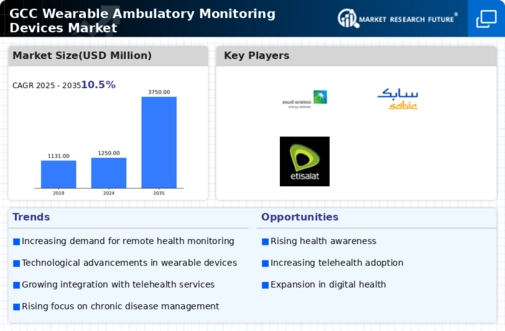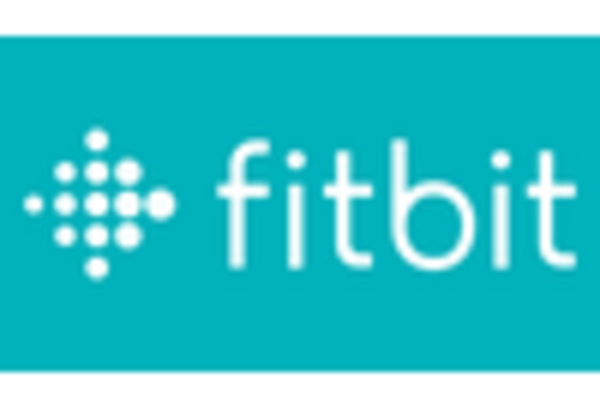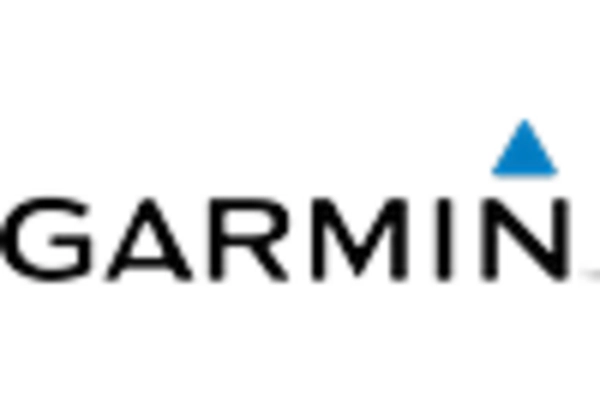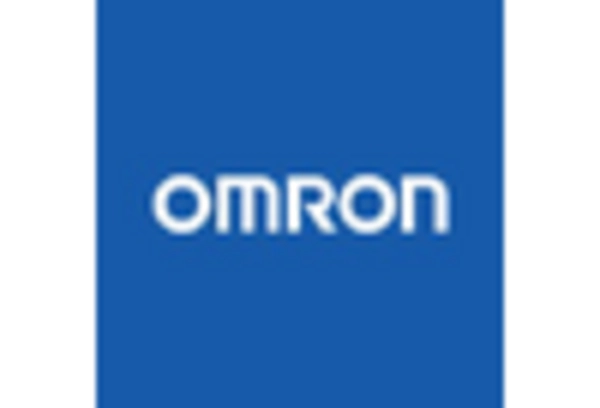The wearable ambulatory-monitoring-devices market is currently characterized by a dynamic competitive landscape, driven by technological advancements and an increasing consumer focus on health and wellness. Major players such as Apple Inc (US), Samsung Electronics (KR), and Philips Healthcare (NL) are at the forefront, each adopting distinct strategies to enhance their market positioning. Apple Inc (US) continues to innovate with its health-focused features, integrating advanced sensors and health monitoring capabilities into its devices, thereby appealing to a health-conscious demographic. Samsung Electronics (KR) emphasizes regional expansion and partnerships, particularly in the GCC, to leverage local Market Research Future and enhance its product offerings. Philips Healthcare (NL) focuses on digital transformation, integrating AI and data analytics into its devices to provide more personalized health monitoring solutions, which positions it favorably in a market increasingly driven by data.
The business tactics employed by these companies reflect a concerted effort to optimize supply chains and localize manufacturing, which is crucial in a moderately fragmented market. This competitive structure allows for a diverse range of products and services, catering to various consumer needs. The collective influence of these key players shapes market dynamics, as they continuously adapt to emerging trends and consumer preferences, thereby fostering a competitive yet collaborative environment.
In October 2025, Apple Inc (US) announced a partnership with a leading health insurance provider to offer incentives for users who engage with its health monitoring features. This strategic move not only enhances user engagement but also positions Apple as a leader in integrating wearable technology with healthcare services, potentially increasing its market share in the health-focused segment. Similarly, in September 2025, Samsung Electronics (KR) launched a new line of wearable devices specifically designed for the GCC market, featuring localized health metrics and language support. This initiative underscores Samsung's commitment to understanding regional consumer needs and adapting its offerings accordingly.
In August 2025, Philips Healthcare (NL) unveiled a new AI-driven analytics platform that integrates with its wearable devices, allowing for real-time health monitoring and predictive analytics. This innovation is significant as it enhances the value proposition of Philips' products, making them more appealing to both consumers and healthcare providers. Furthermore, in July 2025, Omron Healthcare (JP) expanded its product line to include advanced blood pressure monitoring devices that sync with mobile applications, reflecting a growing trend towards connected health solutions.
As of November 2025, the competitive trends in the wearable ambulatory-monitoring-devices market are increasingly defined by digitalization, sustainability, and the integration of AI technologies. Strategic alliances are becoming more prevalent, as companies recognize the value of collaboration in enhancing product offerings and market reach. Looking ahead, competitive differentiation is likely to evolve, shifting from price-based competition to a focus on innovation, technological advancements, and supply chain reliability. This transition suggests that companies that prioritize R&D and consumer-centric solutions will be better positioned to thrive in this rapidly changing landscape.

















Leave a Comment